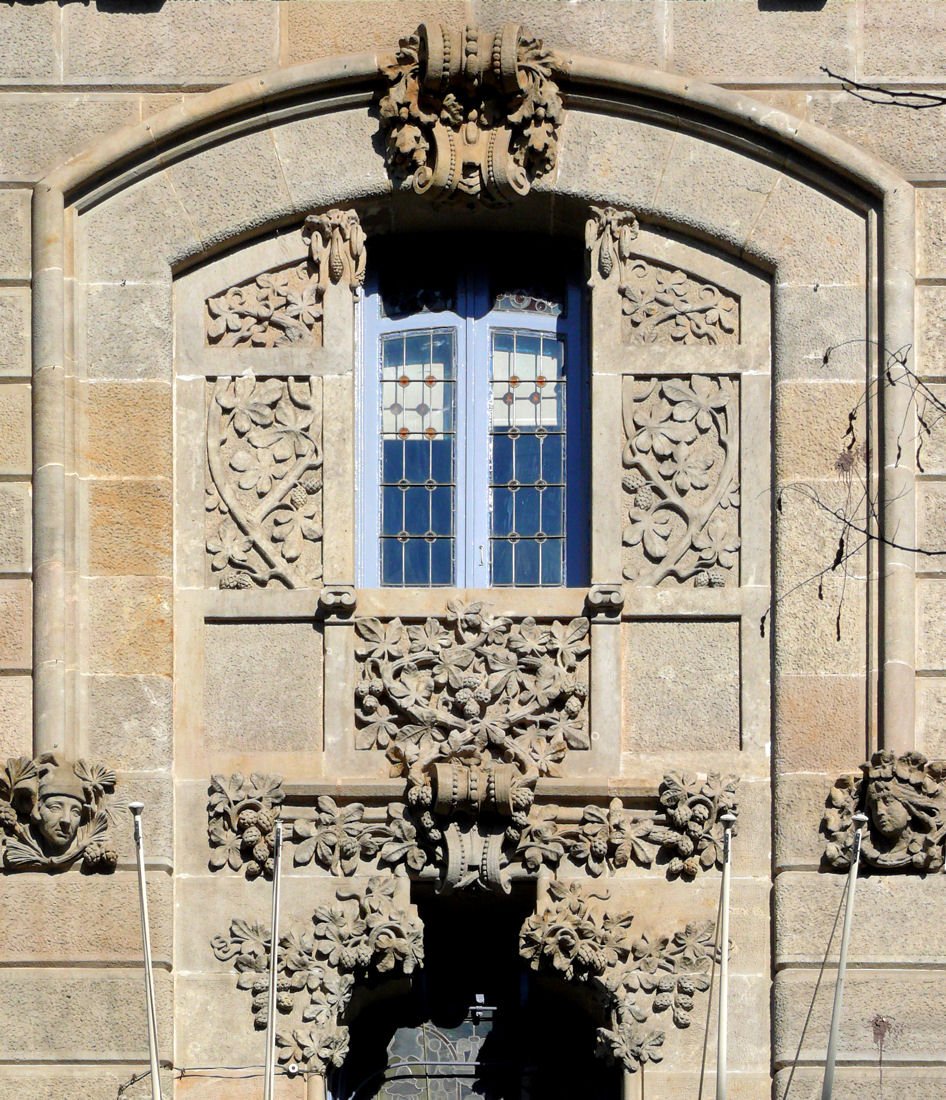#2453. Historic facade with rich floral carving and stained glass window
Before us is a magnificent example of stone decorative carving presented on the facade of a historic building. The architectural composition is centered around a tall arched opening, inside which two vertical elements are placed: in the upper part — a window with blue stained glass, and in the lower part — another opening (possibly an entrance).
The facade is made of sandstone or limestone in a light beige shade, which is characteristic of many European historical buildings. The detailing of the stone carving is striking in its richness. The upper part of the arch is crowned with a decorative cartouche with floral ornament, from which exquisite garlands and foliate motifs descend.
Particularly noteworthy is the abundant floral carving surrounding the window opening. Flower and leaf ornaments, grape vines, and acanthus leaves create the impression of lush vegetative framing. In the lower part of the composition, one can notice decorative mascarons — sculptural depictions of faces integrated into the general plant ornament.
The stained glass window, enclosed in blue frames, has a geometric pattern with medallions, creating a pleasant contrast with the organic lines of the stone carving. This stylistic technique is characteristic of Neo-Renaissance or Neo-Baroque architecture from the late 19th to early 20th century, when masters sought to recreate the richness of decorative elements from historical styles.
